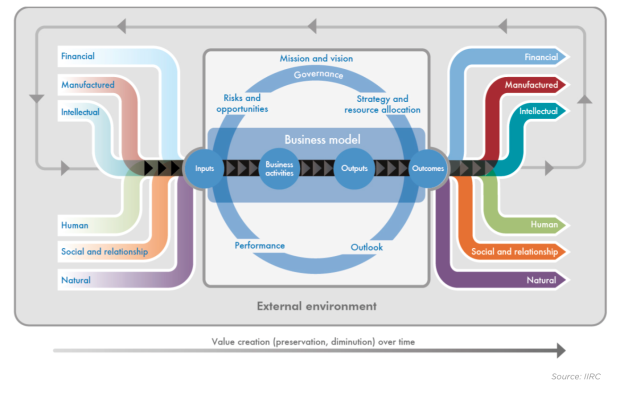What better time for businesses to think about their use of natural capital such as water than today, on World Water Day.

According to OECD’s environmental outlook to 2050, current global water demand is projected to increase by 55 % by 2050 due to growing demand from manufacturing (+400 %), thermal electricity generation (+140 %) and domestic use (+130 %). It is also projected that over 40 % of the global population will live in areas under severe water stress. Severe water stress is already occurring with findings showing that over 60 million people will be affected by El Niño in 2016. With water being a significant resource to both business operations and businesses' value chains, companies need to move away from ‘business as usual’ and adopt strategies that reduce the stress on water demand while optimising consumption. An example of a strategy to adopt is a model focused on circular economy principles.
What is the circular economy?
The Ellen MacArthur Foundation defines the circular economy as one that is restorative and regenerative by design, and which aims to keep products, components and materials at their highest utility and value at all times, distinguishing between technical and biological cycles. The circular economy finds its roots in industrial ecology, which studies material flows through industrial systems and uses the analogy of natural systems – where nothing is wasted – as an aid to design sustainable systems.
The circular economy approach encourages a business model built to focus on closing the loop between inputs and outputs, thus moving away from a linear model. The concept calls for organisations to look at their systems as a whole and rethink how product materials and packaging can be cycled back into operations and supply chains. It is important to look at all the elements within the system in order to see where there is an opportunity to create more value and to build resilience. The greatest efficiencies and savings are often at the design stage.

Considering water, for example: a good business model would be based on reusing and recycling water while maintaining water quality to required standards. This would entail for example the adoption of technologies that collect and reuse waste water, amongst other changes to design. Not only does this benefit the organisation, but it also creates a potential business opportunity in water conservation, as found by McKinsey.
The benefits of adopting the circular economy model
Adopting the principles of circular economy will not only strengthen your business model to respond to resource scarcity but it will also show investors that a company is committed to environmental, social and governance (ESG) best practice. It also minimises risks, reduces environmental impacts, improves operational performance and brings an overall competitive advantage.
In the book Waste to Wealth, the authors describe one company, CRAiLAR technologies, adopting a circular supply chain model, which in turn minimizes the company’s environmental risk. By applying a natural enzyme to flax fibre, the company produced a garment that is as soft as cotton, demands less water and is price competitive. Studies have shown that producing 1 kilogram of finished cotton can take anywhere from 2,000 to 29,000 litres whereas CRAiLAR uses just 17 litres to produce one kilogram of its material: a savings of up to 99%.
Implementing the circular economy model meets certain requirements of the CDSB Framework in the following way:
- It allows the business strategy to enhance business performance (REQ-1)
- It allows to identify and address risks, as well as to capitalise on opportunities (REQ-2).
- It draws a company’s attention to environmental impacts and prepare for a sustainable future (REQ-4 & REQ-6).
Through the CDSB Framework, it becomes easier to align and integrate a company’s environmental information with financial information in the company’s annual report. An integrated annual report can convey information to investors and other stakeholders in a way that allows sound decision-making.
The European Commission has already adopted a Circular Economy Package consisting of an EU action plan for circular economy as well as other revised legislative proposals on waste. There is growing interest in this concept and an increasing number of companies are re-evaluating how they use natural resources. In fact, over one third of global CEOs were actively seeking to employ the circular economy model in 2013. Don’t be left behind and start implementing the circular economy today.